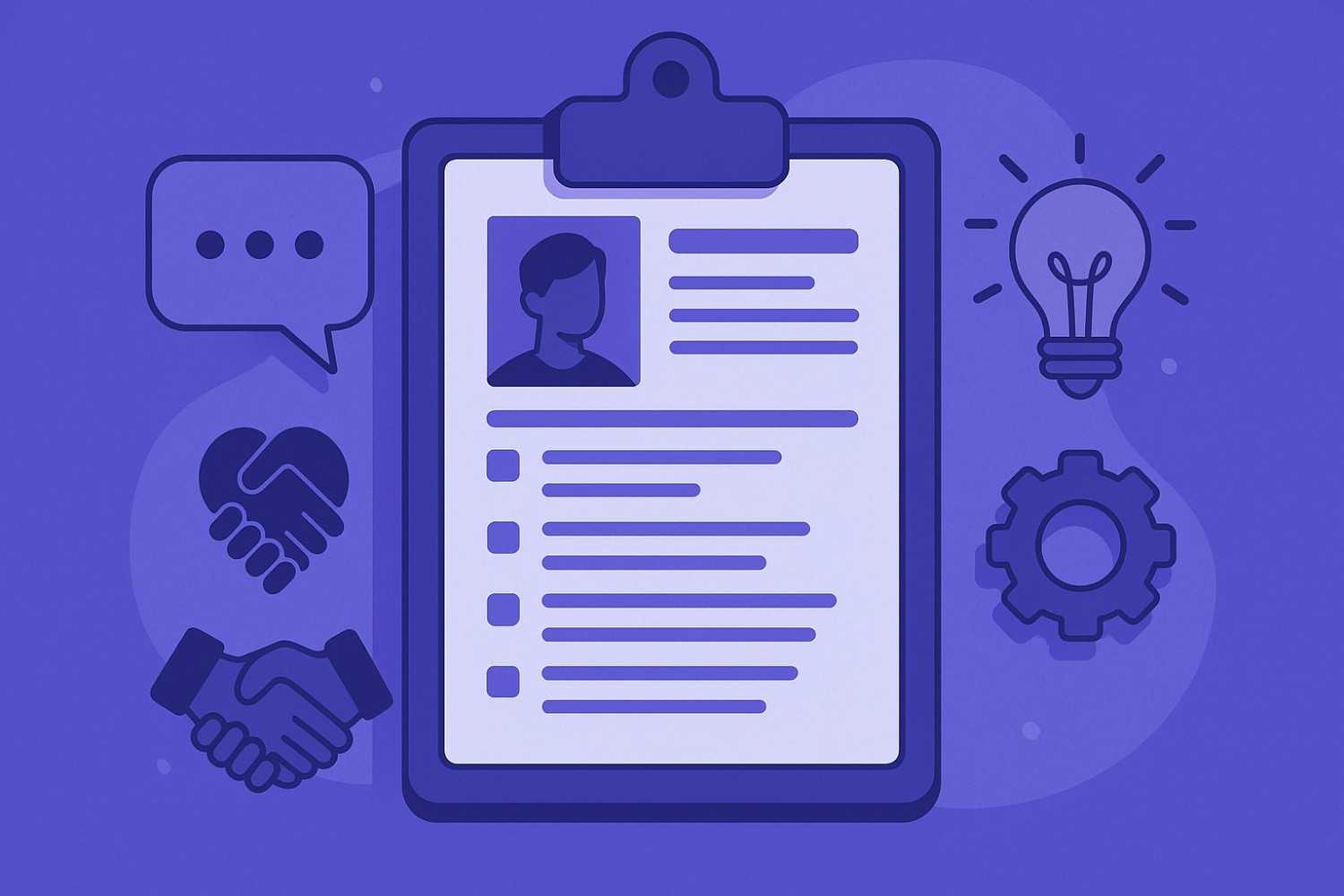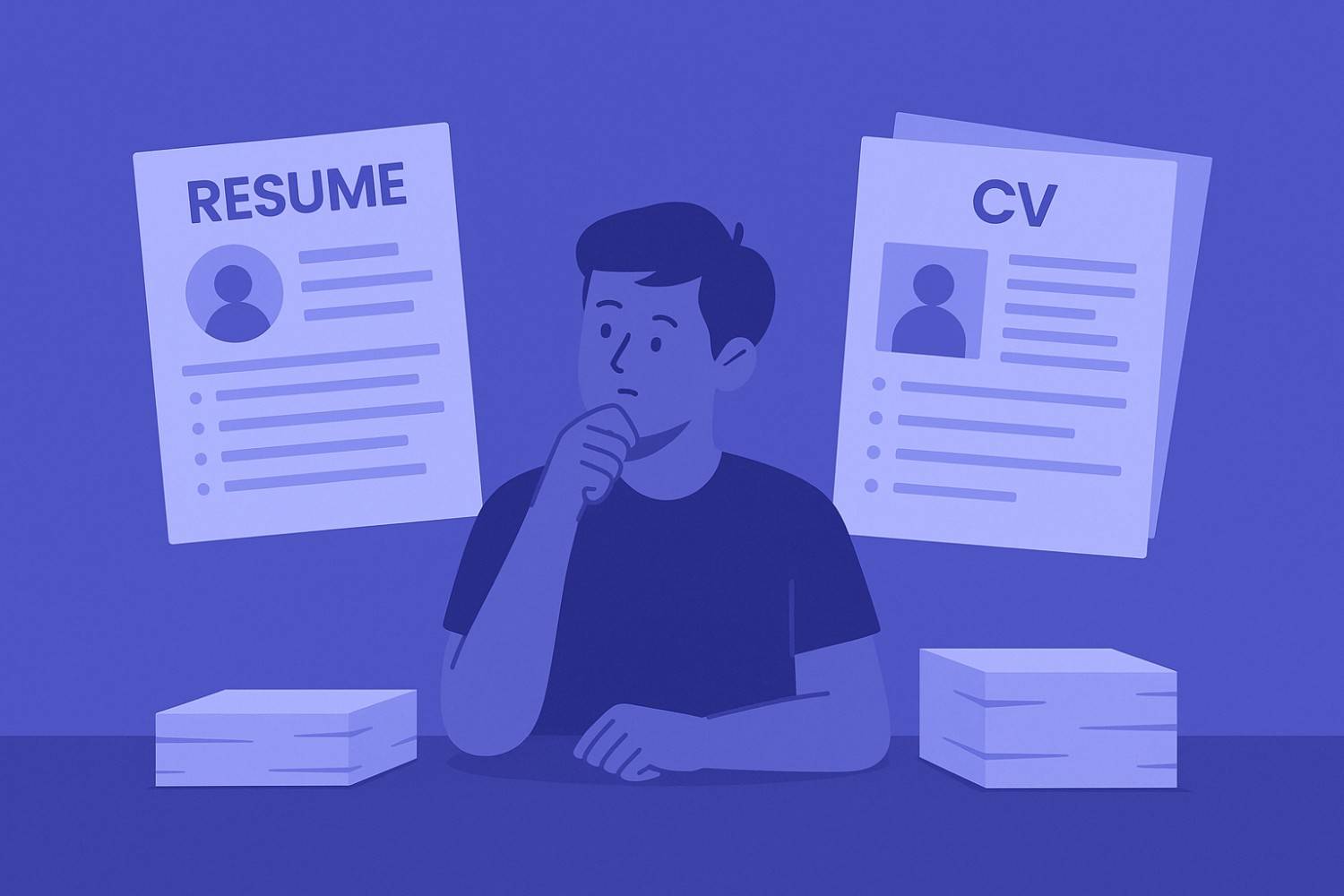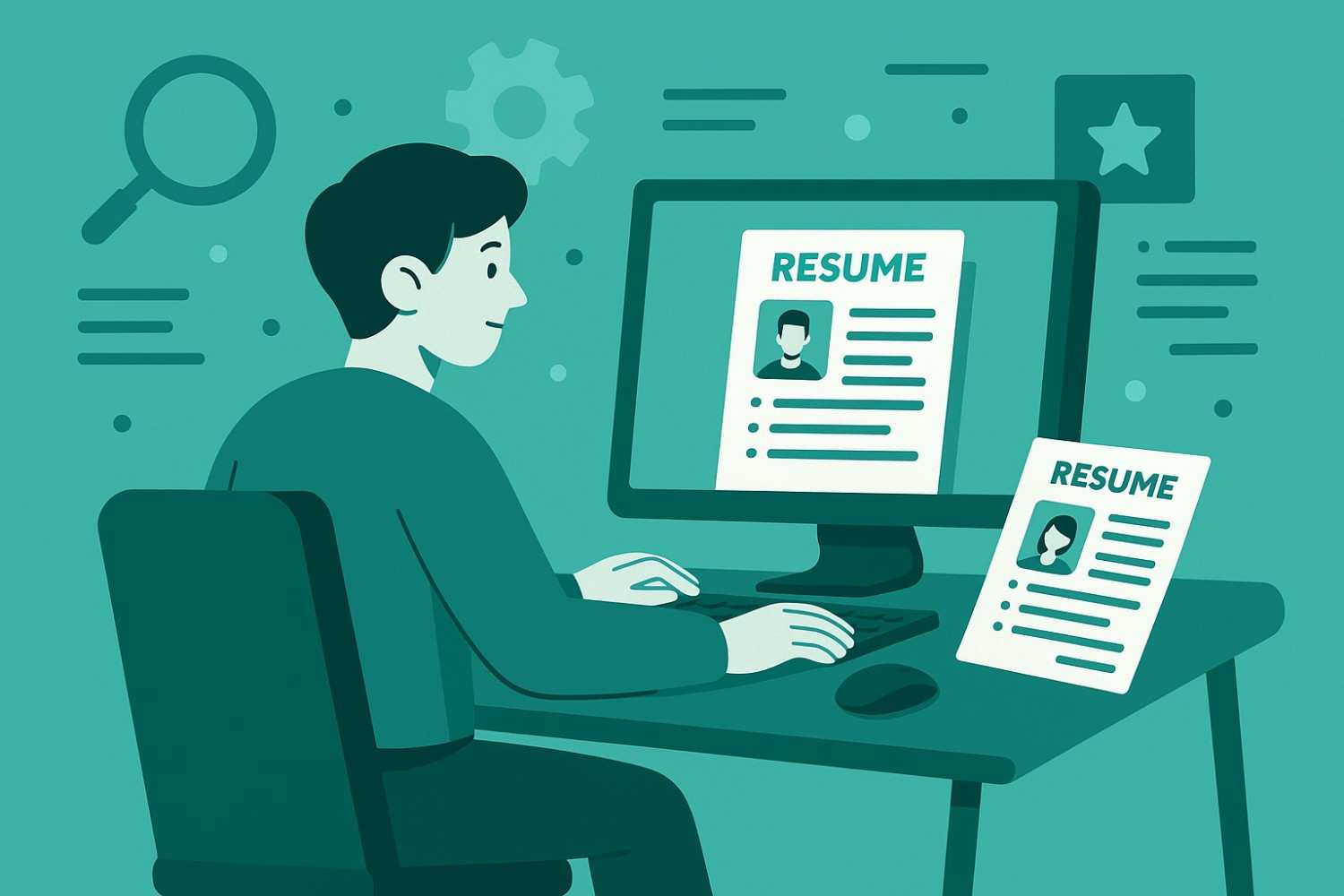Resume Tips for Freshers with No Work Experience

Discover the essential hard and soft skills to feature on your resume. Get real examples and tips to showcase your...

Understand the key differences between a resume and a CV, when to use each, and how to format them for maximum...

Learn how to craft a standout resume as a fresher with no prior work experience. Tips on formatting, sections,...

Learn how to craft a compelling resume summary or objective that grabs recruiters’ attention. Get tips, examples,...

Learn how to strategically use keywords in your resume to pass applicant tracking systems (ATS) and land more...

Learn how to write a strong resume with essential sections, examples, and tips: perfect for students, freshers, and...

Learn how to customize your resume for each job application. Improve your shortlisting chances by aligning your...

Learn the differences between chronological, functional, and hybrid resume formats. Choose the best layout based on...

Learn the most frequent resume mistakes freshers and professionals make, with tips to fix them and stand out in a...

A complete, beginner-friendly guide to writing a professional resume with clear steps, examples, and tips using a...
Resources
-

Set up personalized job alerts to receive notifications about new job openings that match your...
-

Find part-time job opportunities perfect for students, parents, and professionals seeking...
-

Work from home jobs across industries with flexible hours, competitive pay, and real career...
-

Create professional resumes with easy-to-use resume builders. Choose from templates, get...
-

Kickstart your career with internships tailored for students and graduates — explore paid,...
-

Remote jobs have revolutionized how we work, giving professionals the freedom to contribute from...
-

Find the best fresher jobs and entry-level opportunities across IT, Finance, Marketing, and...

Resume Tips for Freshers with No Work Experience
Writing your first resume can feel daunting when you have no formal work history. But every skill, project, and achievement you’ve gained as a student or volunteer can become a compelling entry on your resume. This guide shows you how to highlight your potential, craft a clean layout, and leverage free tools to stand out, even without a professional background.
1. Understand the Purpose of Your First Resume
A resume for a fresher serves two main goals:
- Showcase potential: Demonstrate your skills, passion, and willingness to learn.
- Prove relevance: Match your profile to the internship or entry-level role’s requirements.
Your resume is your personal marketing document. Think less about past jobs and more about skills, projects, and achievements that employers value.
2. Choose the Right Resume Format
For candidates with limited experience, the combination or functional format often works best:
-
Combination Resume Focuses first on skills and achievements, then list your education.
-
Functional Resume Emphasizes skill categories, with minimal focus on dates or employers.
Avoid a strict chronological format—it can make gaps and lack of experience more obvious.
3. Craft a Clear Header and Contact Information
Your header is the first thing a recruiter sees. Keep it simple:
- Full name (bold, slightly larger font)
- Professional title (e.g., “Computer Science Student” or “Marketing Enthusiast”)
- Phone number and professional email (use a university or Gmail address)
- LinkedIn profile (custom URL)
- Portfolio or GitHub link if you have projects to show
text
Jane Doe
Computer Science Student
(555) 123-4567 | jane.doe@example.com
linkedin.com/in/janedoe | github.com/janedoe
4. Write a Compelling Resume Objective
As a fresher, a resume objective sets context by stating your goals and strengths. Keep it to 1–2 sentences:
- Who you are (your background or study focus)
- What you aim to achieve (skills you want to apply or learn)
- What you bring (relevant coursework, soft skills, or tools)
Example: Ambitious marketing student with strong communication and research skills. Seeking an internship at [Company] to apply social media strategy and data-driven content creation.
5. Highlight Your Education Section
Your education is your strongest asset. Include:
- Degree and major (e.g., “Bachelor of Commerce, Marketing Major”)
- University name, location, and graduation year
- GPA (if ≥3.5) or relevant honors
- Relevant coursework: List 3–5 classes if they match job requirements
text
Bachelor of Business Administration, Marketing Major
University of XYZ, City, State | Expected May 2026
GPA: 3.8/4.0
Relevant Coursework: Consumer Behavior, Digital Marketing, Market Research Methods
6. Showcase Projects and Academic Work
Projects transform abstract skills into concrete results. For each, include:
- Title and timeframe (e.g., “E-commerce Website Prototype — Jan 2024”)
- Tools and technologies (WordPress, Python, Figma)
- Your role and key contributions
- Outcome or metric (e.g., “Increased user testing satisfaction by 20%”)
text
E-commerce Website Prototype | Jan 2024 – Mar 2024
- Designed UI/UX wireframes in Figma; implemented front end with HTML, CSS, and JavaScript
- Conducted user testing sessions (n=15) and improved checkout flow, boosting task success rate from 60% to 80%
7. Emphasize Your Skills Section
Divide skills into hard and soft categories:
- Hard Skills: Programming languages, software, lab techniques, design tools
- Soft Skills: Communication, teamwork, time management, problem-solving
Use bullet points and keywords from job descriptions to ensure ATS recognition.
```text Hard Skills - Python, Java, SQL - Adobe Creative Suite (Photoshop, Illustrator) - Microsoft Excel (PivotTables, VLOOKUP)
Soft Skills - Written and verbal communication - Leadership and collaboration - Analytical problem-solving ```
8. Include Certifications and Online Courses
Certificates show initiative and continuous learning:
- Platform name (Coursera, HubSpot Academy, Google)
- Course title and completion date
- Key skills acquired (SEO, data analysis, project management)
Tip: Add these under a “Certifications & Training” section to catch recruiter attention.
9. Add Extracurricular Activities and Volunteering
University clubs, events, and volunteer roles demonstrate leadership and teamwork:
- Position and organization (e.g., “Event Coordinator, Tech Club”)
- Duration and location
- Major contributions and any measurable outcomes
text
Event Coordinator, Tech Club | Sep 2023 – Present
- Organized quarterly hackathons with 100+ participants; managed sponsorship outreach and logistics
- Coordinated workshops on Python and web development, increasing member engagement by 30%
10. Use Action Verbs and Quantify Achievements
Start bullets with strong verbs and include numbers where possible:
- Managed, Developed, Led, Designed, Analyzed, Implemented
- Quantify: “Conducted 5 user interviews”, “Increased newsletter open rate by 15%”
Quantified achievements stand out to both ATS and human readers.
11. Tailor Your Resume for Each Role
One generic resume won’t cut it. For every application:
- Scan the job description for top keywords (use Ctrl+F).
- Mirror phrasing exactly (e.g., “content strategy” vs. “content development”).
- Reorder bullets to highlight the most relevant skills and experiences first.
Tailoring shows recruiters you’ve done your homework and care about the role.
12. Keep Design Simple and ATS-Friendly
ATS software can’t read overly complex layouts. Follow these rules:
- Use standard headings: Experience, Education, Skills, Projects
- Stick to sans-serif fonts: Arial, Calibri, or Helvetica
- Avoid columns, images, and text boxes—keep all text in the main body
- Save as PDF or DOCX; ensure the file name is clear (e.g., Jane_Doe_Resume.pdf)
13. Proofread and Get Feedback
Typos and inconsistencies undermine credibility. To polish your resume:
- Spell-check using your word processor
- Read aloud to catch awkward phrasing
- Ask mentors, professors, or peers for honest feedback
14. Final Checklist Before Submitting
Before hitting “Submit,” confirm:
✔️ Contact details are correct and professional ✔️ Header and objective/summary use keywords from the JD ✔️ Education, projects, and skills sections highlight your strengths ✔️ Bullets start with action verbs and include metrics ✔️ Layout is clean, ATS-friendly, and under 2 pages ✔️ No spelling or grammar errors
A quick 2-minute review can save you from a lost opportunity.
15. Leverage JobPe’s Free Resume Builder
Make the process even easier with JobPe’s tools:
- Resume Builder: Choose ATS-optimized templates and get real-time keyword suggestions.
- Auto-Apply Tool: Submit to multiple roles at once with your optimized resume.
- Interview Questions: Practice talking about each resume bullet point.
- Coding Practice: Sharpen technical skills to back up your resume claims.
- Companies Directory: Research potential employers and tailor your resume accordingly.
16. Next Steps and Additional Resources
After you polish your resume, take these steps:
- Apply strategically: Focus on 5–10 high-fit roles rather than mass-applying.
- Prepare for interviews: Use our Mock Interviews and Interview Questions.
- Follow up: Send polite thank-you emails 24 hours after interviews.
- Build your network: Connect with professionals on LinkedIn and join relevant online communities.
- Continue learning: Enroll in courses on JobPe Blog recommendations and update your resume as you progress.
Your first resume is just the beginning. As you gain experience, revisit and revise it regularly to reflect new skills and achievements.
You’re now equipped to craft a powerful resume—no prior job experience required. Start using these tips today, leverage JobPe’s free tools, and take the first step toward landing your dream internship or entry-level role. Good luck!
